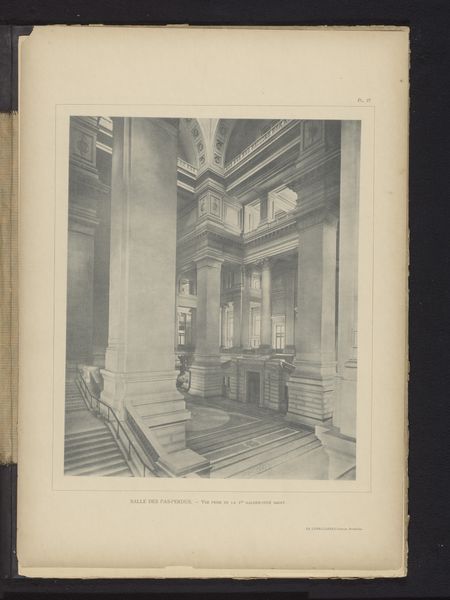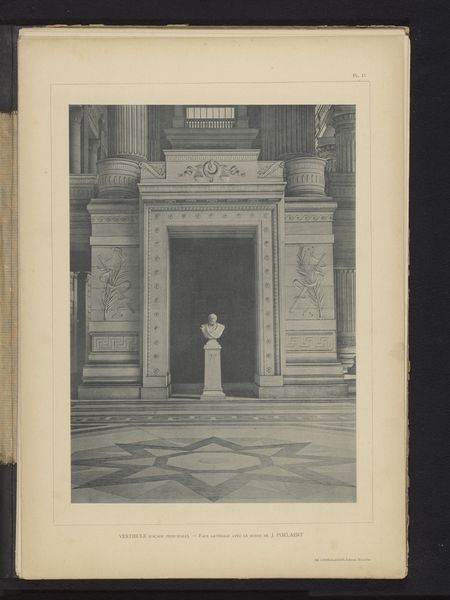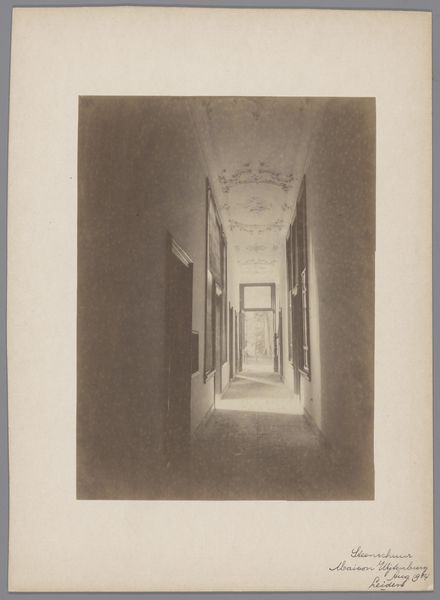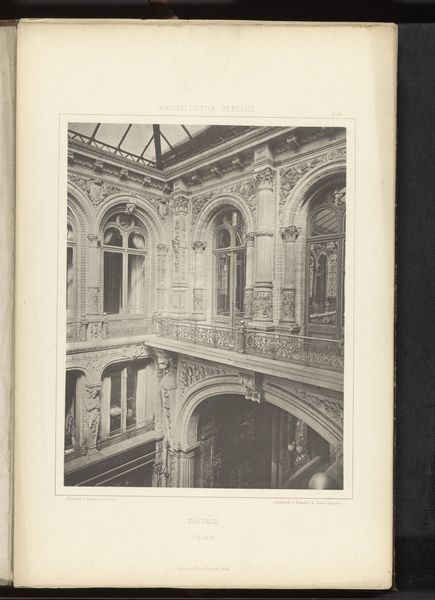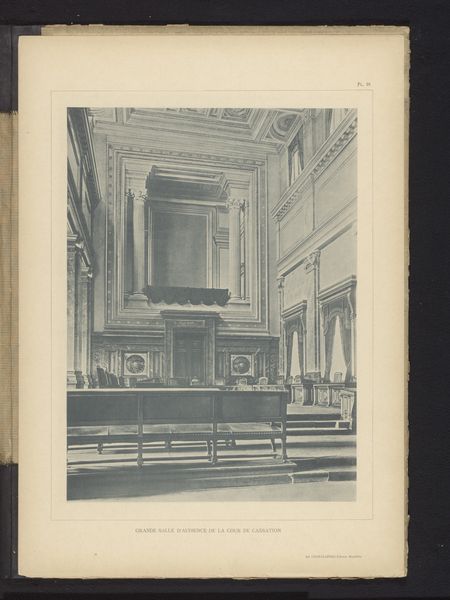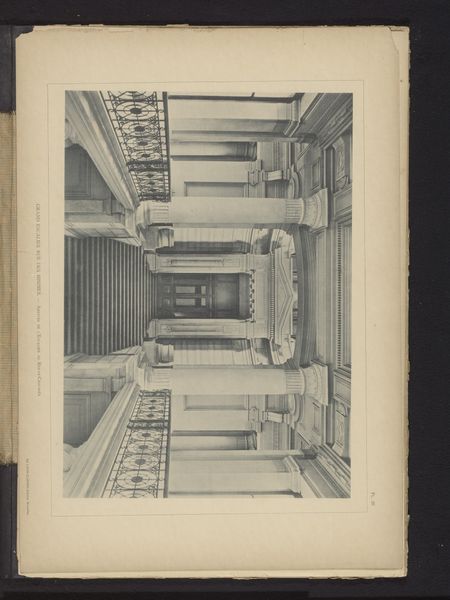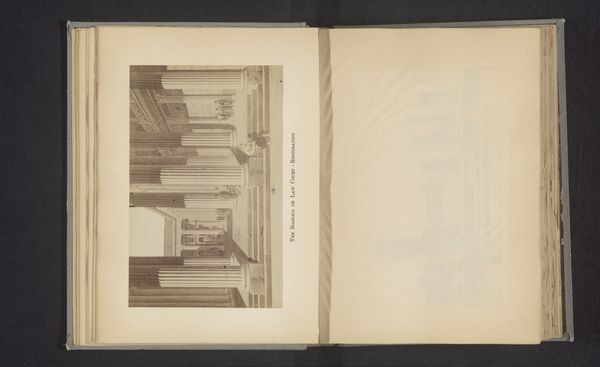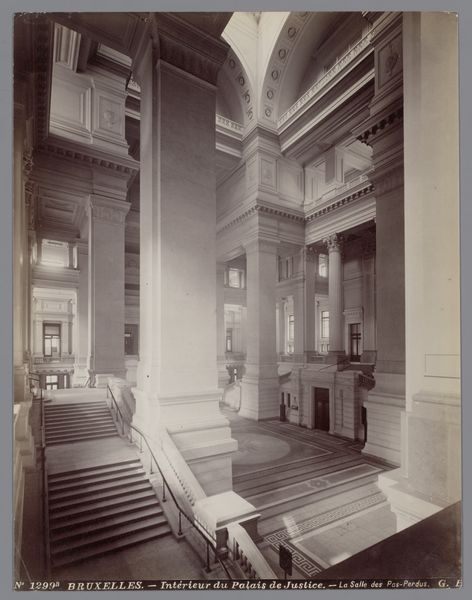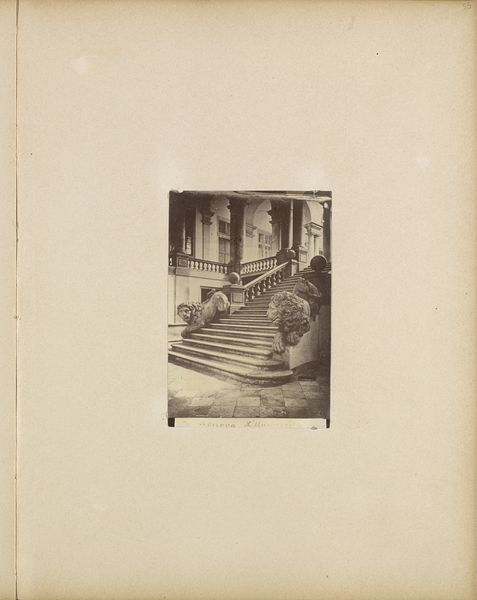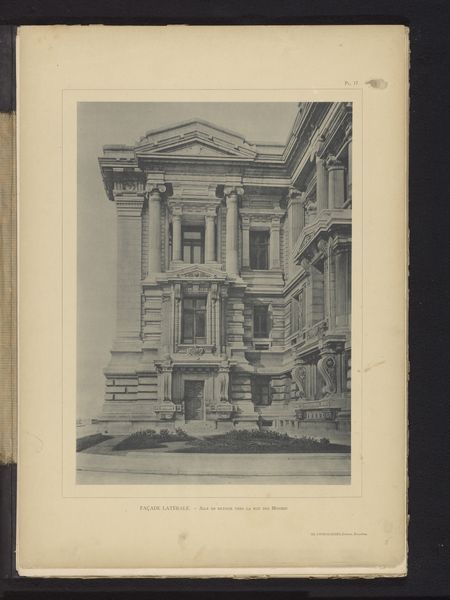
Gezicht op de trap aan de westzijde van het Paleis van Justitie in Brussel, België before 1894
0:00
0:00
Dimensions: height 331 mm, width 240 mm
Copyright: Rijks Museum: Open Domain
Curator: Standing before us is a photograph, taken before 1894 by an anonymous photographer, depicting the grand staircase on the western side of the Palace of Justice in Brussels, Belgium. The photograph showcases the building’s Neoclassical style through a realist lens. Editor: It's immediately imposing. The sheer scale is quite arresting, isn’t it? All those receding steps dwarfing any implied human presence. A silent, weighty space. Curator: Indeed. The repetition of geometric shapes, those pillars, arches, and stairs create a powerful impression, echoing the importance of civic architecture. Think of the Palace itself. Its architecture aimed to project a very deliberate message about justice, law, and state authority. Editor: And the symbolism, perhaps? The ascent toward justice? One imagines countless individuals climbing these stairs, bearing burdens or seeking verdicts. There is a tangible, if muted, narrative imbued in this composition. Curator: I find it fascinating how the photograph itself, rendered in monochrome, affects its impact. It adds a sense of timelessness but also maybe hints at the rigidity of law, and the removal of colorful human stories within its process. Editor: It's intriguing how the choice of perspective—looking directly up the staircase—emphasizes the building's dominance. One could feel quite small entering that space, potentially amplifying feelings of vulnerability within the justice system itself. The anonymous nature of the photographer reinforces the sense of officialdom, don't you think? Curator: I concur, anonymity further depersonalizes the process. I do appreciate, however, that the photographer immortalized this viewpoint, documenting the imposing scale, which arguably has, in its way, begun to take on its own, different kind of emotional weight and symbol over the decades. Editor: It has. As a piece of social and architectural documentation, this artwork serves both as a testament to the ideals the Palace aimed to embody and a poignant observation of the physical and, dare I say, psychological structures that uphold our justice system. Curator: Exactly. Looking at the cultural memory and continuity such a structure invokes through symbolic forms lets me really examine the emotional imprint created through architectural form.
Comments
No comments
Be the first to comment and join the conversation on the ultimate creative platform.
